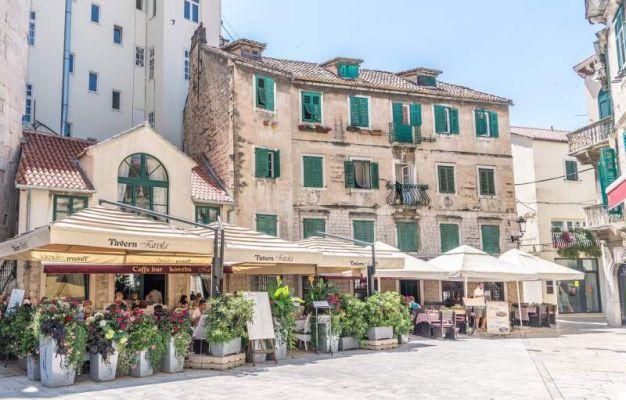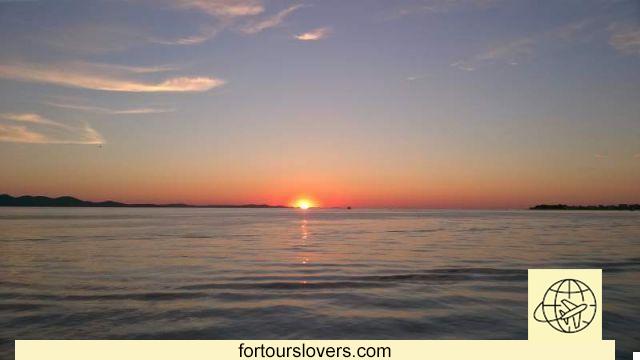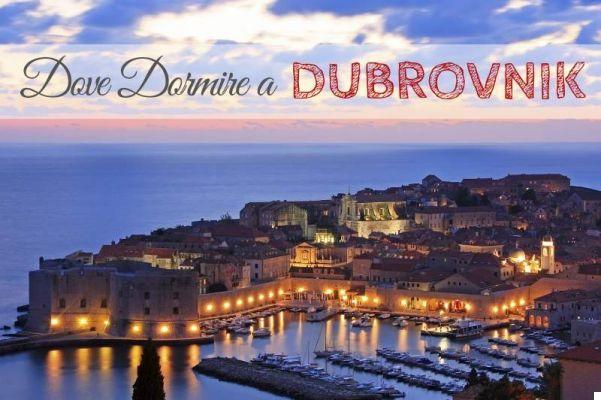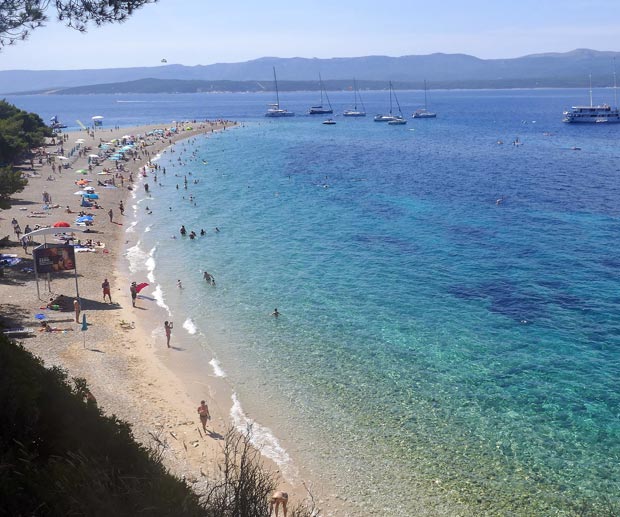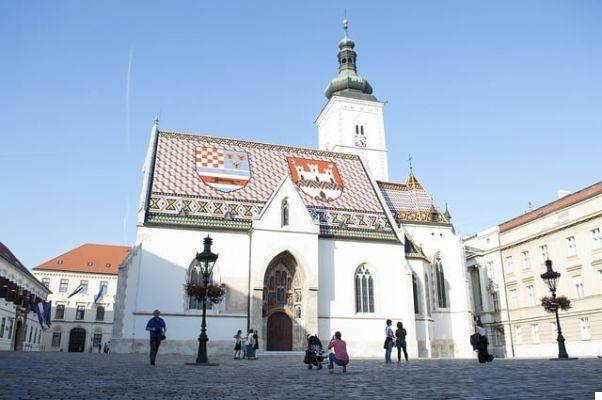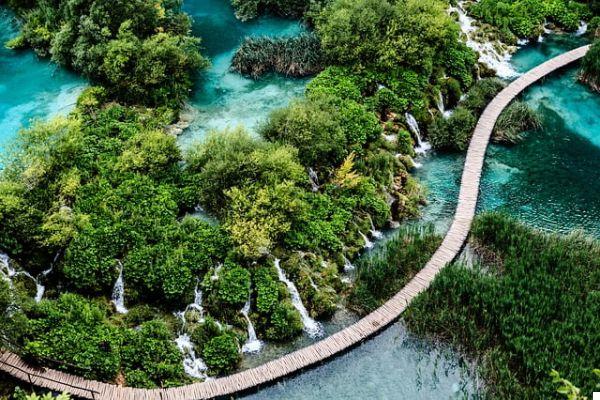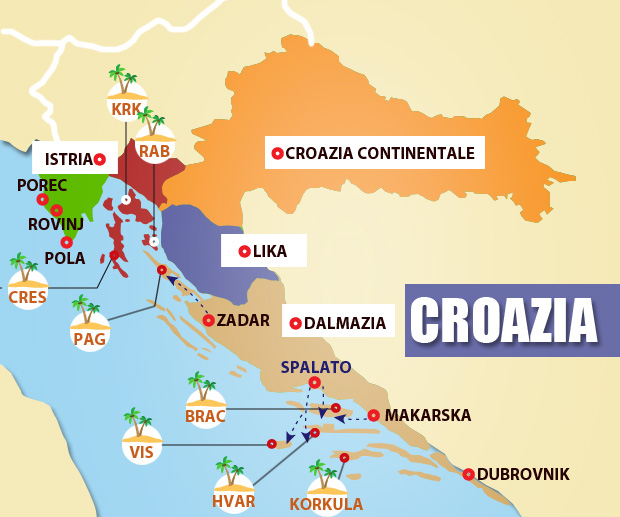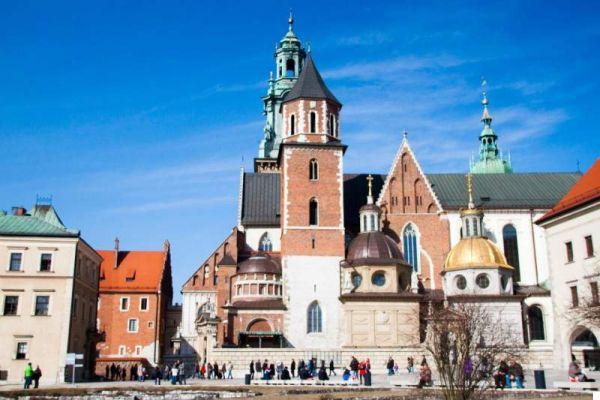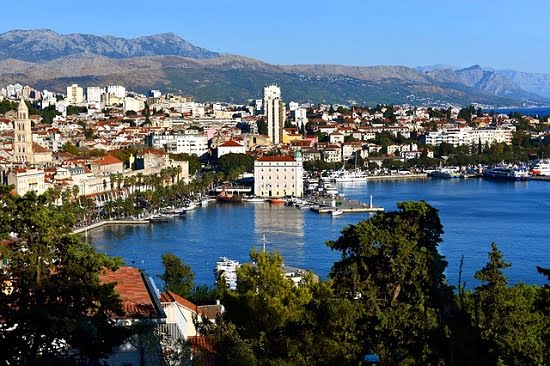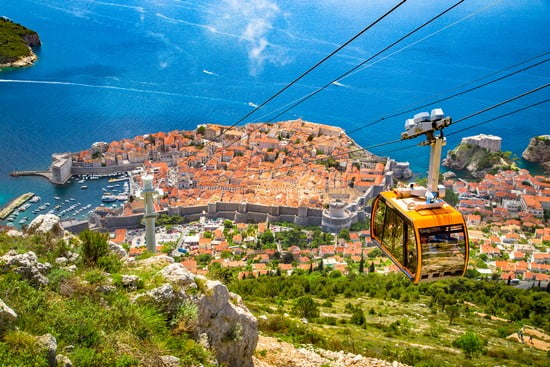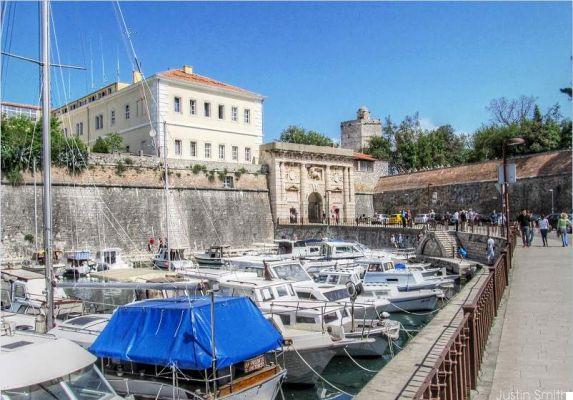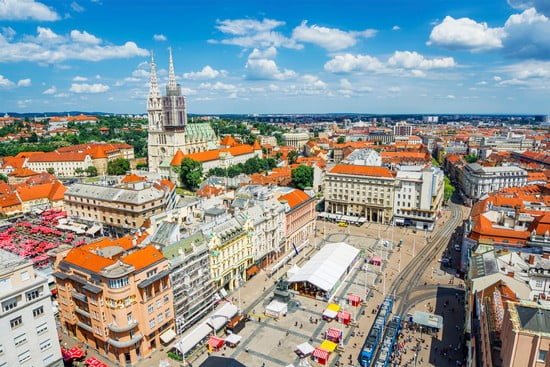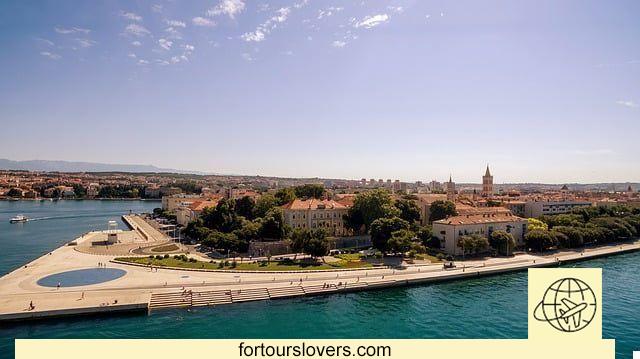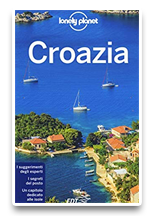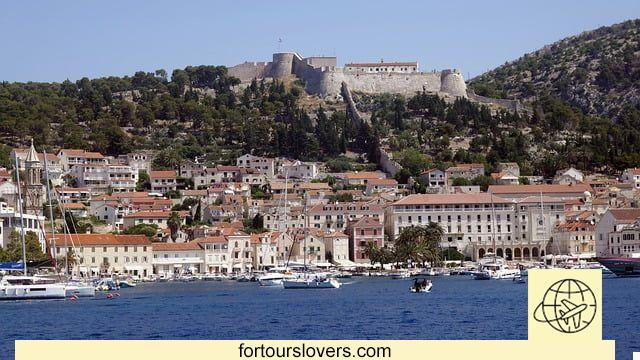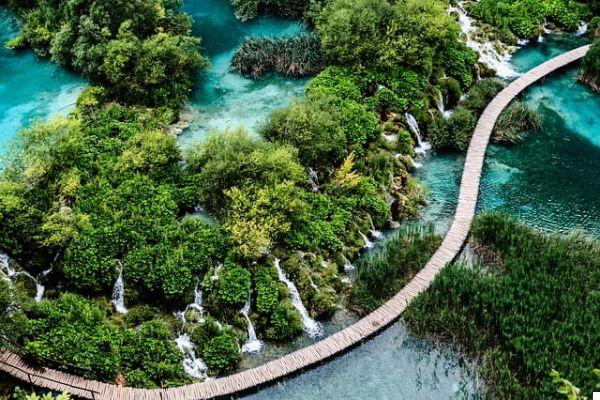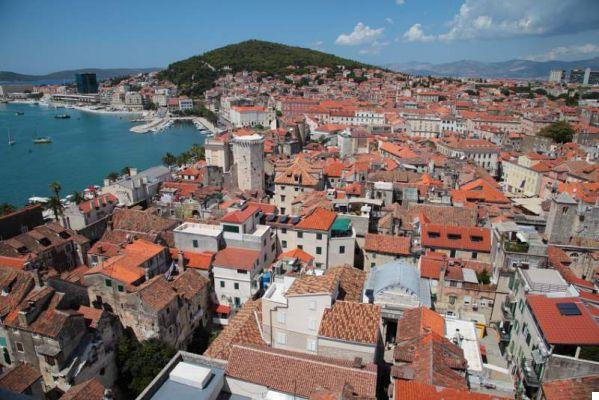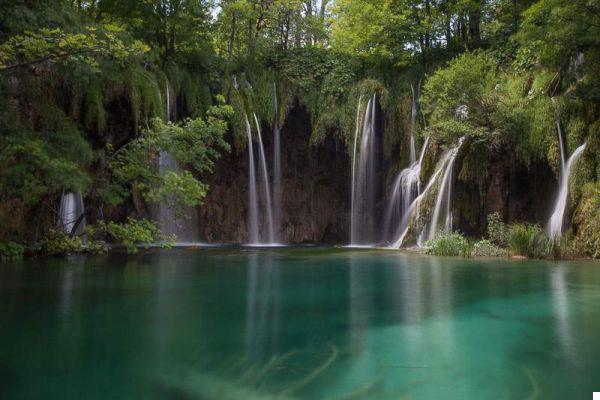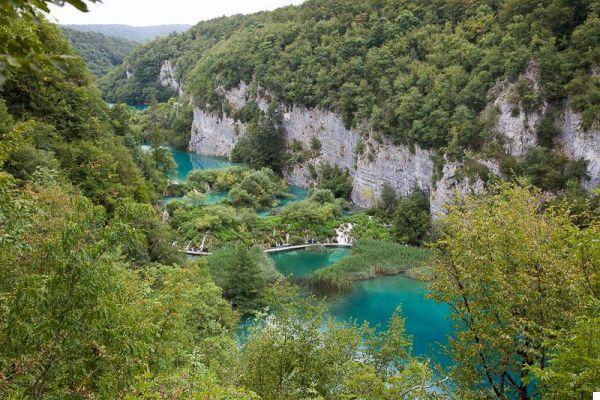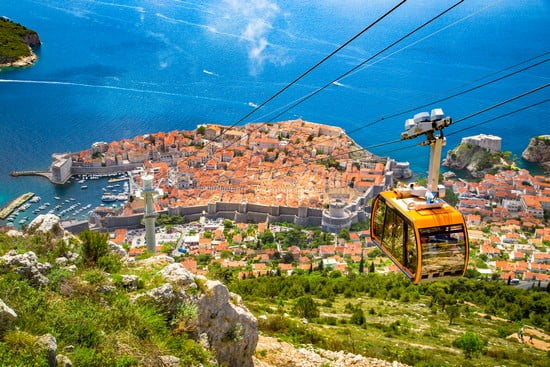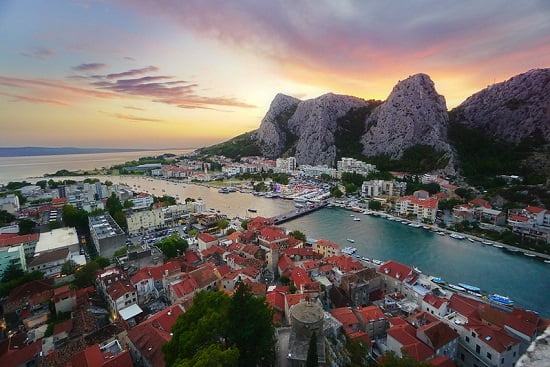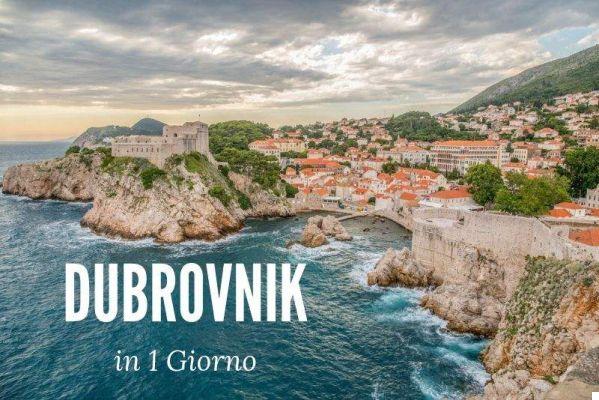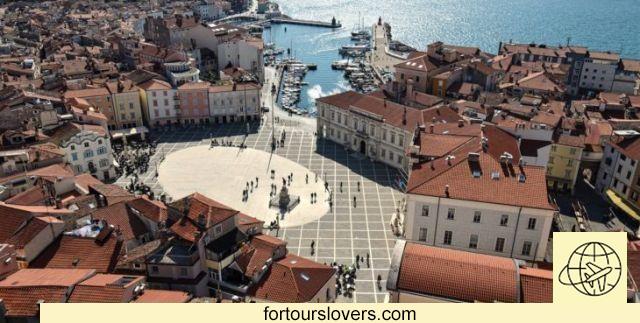
Istria
12 things to do and see in Istria and 2 not to doVariety is the key word to describe Istria, both from the landscape-environmental point of view and from the historical-cultural point of view. Sea, beaches, mountains, lush vegetation and one of the most significant archaeological heritage in Europe make this region, divided between Slovenia (in the photo the city of Piran from above) and Croatia, one of the fastest growing tourist destinations in the Mediterranean. To these few hints, we must add the geographical location of the territory, meeting point between southern and central-eastern Europe. In short, a truly wide crossroads in which the traces of the Italian and Austro-Hungarian dominations coexist harmoniously. The present of the region is tourism, but traditions, community ties, and especially family ones, continue to mark the days of Istrians, helping to create that relaxed and jovial atmosphere that fascinates more and more visitors every year. Below we see together the main attractions of Istria. Happy reading.
1 Caves of San Canziano
Le Škocjan Caves (or Škocjan Caves) they are one of the flagships of Slovenian Istria. We have already talked about it in the article on Trieste, suggesting to visit this underground world for years under Unesco protection. Among other things, UNESCO recognition is not the only recognition: the Škocjan Caves (in the photo, the crowd at the entrance), in fact, are part of the European network "Natura 2000" whose mission is the preservation of unique but nonetheless fragile ecosystems and therefore in need of constant attention. For this reason, the caves are part of a Regional Park which also includes the homonymous town of Škocjan and the two towns of Betanja e Matavun. For more information on the history and naturalistic aspects of this unique place in the world, visit the website: www.park-skocjanske-jame.si (Spanish version available).
2 Piran
About fifty kilometers from the Caves of San Canziano (less than 40 from Trieste) is Piran, the most beautiful city on the Slovenian coast. The architectural aspect of Piran (or Pirano) is particularly striking: narrow alleys and houses clinging to each other clearly reveal the centuries-old Venetian influence on the territory. To see the bell tower and the church of San Giorgio. In particular, from the top of the first you can see a wonderful view of the city gulf. The square named after the violinist Giuseppe Tartini is also suggestive, as well as the town of Portoroz (Portoroz) just 4 kilometers away. Both Piran and Portoroz are particularly popular destinations, especially during the summer. Actually Portoroz is also in winter as there are several casinos. To be seen!
3 Novigrad
About thirty kilometers further south of Piran there is Novigrad (or Novigrad) coastal town of Croatian Istria. There are just over 4000 residents of the town, but during the summer season the number of presences grow considerably. This is thanks to tourism, which from the 70s onwards has gradually established itself as the main activity, undermining fishing, which has been the main source of income up to now. The transition from a subsistence and small commerce economy to one linked to services has had its consequences from an urbanistic point of view. Indeed, Novigrad - but the discussion can be extended to the whole of coastal Istria - presents itself with a perfectly successful mix between ancient architecture and tourist infrastructures. Those who want to deepen the first must do is visit the historic center of the city. Very well preserved, the old part of Novigrad bears many traces of the centuries-old Venetian domination. To see, the bell tower and the Church of San Pelagio. The latter is a Romanesque style basilica with three naves and, together with the medieval walls, contributes greatly to the charm of the town. Not far from Novigrad, Umag (or Umago) is also worth a visit, while if you are traveling on holiday with children in tow it is worth stopping at the Istralandia Water Park just 7 kilometers away in the direction of Brtonigla. Not to be missed!
4 Poreč
Poreč (or Parenzo) is a pretty town of about 17.000 inhabitants. In addition to its reputation as a seaside resort, the city also deserves from an urban planning point of view. The historical center, organized in decumani and cardi, reveals the Romanesque imprint of the territory, while houses and palaces clearly betray the Italian taste. As is known, in fact, until the end of the Second World War these areas were mainly inhabited by Italians concentrated mainly along the coast. Quite predictably, therefore, the Italian cultural and linguistic heritage (with reference above all to the Istrian dialect) has remained despite the changes that have occurred in the geopolitical sphere. Also worth seeing is the Euphrasian Basilica (in the photo, the roof of the basilica), an ancient Romanesque religious complex famous for the refinement of its mosaics. In addition to the church are part of the structure (UNESCO heritage since 1997), the atrium, the baptistery and the bishop's palace. As for the sea and beaches, however, there is only the embarrassment of choice: Blue Lagoon, Green Lagoon, Plava and Zelena Lagoon are the names of the beaches in Porec where, during the summer, many young people gather. To be seen!
5 Hum
The smallest city in the world. Hum (in the Italian, Colmo) is a tiny medieval village located about thirty kilometers from Pazin, a little less from Buzet, two equally well-known towns in the Istrian hinterland. However, the peculiarity of Hum compared to these others lies in having preserved the original medieval architectural imprint. Surrounding walls, front door, a small group of stone houses and 2 churches (San Gerolamo and San Giacomo) which, considering the smallness of the territory, explain a lot about the religious devotion of the inhabitants. A deep-rooted feeling of faith, probably also matured due to the vicissitudes faced over the centuries: first of all the war between Venice (to which the town belonged) and Austria; then the plague of 1423; and again the Turkish invasions and the Usococchi (Croatian bandits) during the 600s. After the fall of the Serenissima Republic in 1797, the fortunes of Colmo followed in all respects those of the region to which it belongs: therefore, the Austro-Hungarian Empire, the Kingdom of Italy, Yugoslavia, and finally Croatia. In addition to the Romanesque vestiges, the tourist prestige of the locality is also due to the naturalistic heritage all around. Special mention for the route of about 6 kilometers that connects Hum to the village of Roč. The path is dotted with stone monuments with Glalolitic characters, an ancient language of the area that was active until the early XNUMXth century. To do!
6 Rovinj
Rovinj (or Rovigno) it is an unmissable stop on a trip to Istria. The historic center of the town unequivocally reveals theimprint of the Republic of Venice which reigned over the territory from the XNUMXth to the XNUMXth century, leaving a great urban and historical-cultural heritage. Traces that subsequent dominations have inevitably scratched but not canceled. Even today, to say, the Italian community of Rovinj, although decimated due to the Italo-Yugoslav conflict after the Second World War, plays a fundamental role in the life of the community, from food, to traditions up to the aforementioned Istriot dialect. Several things to see: the Clock Tower overlooking the port; the Arco dei Balbi, at the entrance to the city; the Town Hall and, above all, the Church of Santa Eufemia, patron saint of Rovinj. The latter is located in a raised position with respect to the town, offering a spectacular view to visitors, especially from the bell tower more than 60 meters high. Do not miss the nearby Lim fjord, a popular destination for trekking and mountain bike enthusiasts. The abandoned village is also worth a visit Duecastelli (Dvigrad in Croatian) which from Rovinj is about 18 kilometers towards the interior of the region. To be seen!
7 Pula
Pula (or Pola) at the southern end of Istria is the civil, economic and administrative heart of the region. It has been so at least since the nineteenth century when the Austro-Hungarian Empire made the city port its main seaport, resulting in the repopulation of a territory that up to that moment had just over 1000 units. Today, the proximity to the airport and the E751 motorway (Trieste is approx. 120 km away) are the infrastructures that allow visitors to reach, increasingly numerous, the city and the places that follow one another along the coast (Medulin, Pomer, Premantura, Banjale and Verudela). Special mention for the historic center: the Amphitheater (the sixth largest in the world, see photo) and the Archaeological Museum with numerous finds from the Roman period attract crowds of tourists who are thus able to combine well cultural and seaside tourism. Also worth seeing is the Brijuni Islands National Park, which we will discuss more fully in the next point.
8 Brijuni Islands National Park
The archipelago of the Briunji Islands (in Spanish, Brioni) is an unmissable stop on a holiday in Istria. A concentration of beauty (the total area of the 14 islands is just 8 square kilometers) that is not only landscape-environmental but also - above all - historical-cultural. These islands, in fact, were already inhabited by the Romans who exploited the soil to extract the material necessary for the construction of bricks for the construction of palaces, temples and houses. Therefore, together with the overflowing vegetation and a crystalline sea, the countless traces of the glorious Roman civilization are the flagship of these islands. It is therefore not surprising that the Briunji Islands were closed to the public during the long Tito season. For a good part of his mandate, the marshal who created the unification of Yugoslavia made it an exceptional location for state meetings. After the independence of Croatia, the archipelago has once again become open to visitors, soon reaching an enviable compromise between the reasons of the tourist economy and those related, instead, to the preservation of a unique habitat of its kind. Frequent, especially during the summer period, the maritime connections from Pula (Pola) and Fazana (Fazana). Not to be missed!
9 Kamenjak
"Wonderful", "fabulous", "incredible", "heavenly" etc. etc. The comments and reviews found online are unanimous: Kamenjak is a place not to be missed! From Pula, the kilometers to reach thisuninhabited area full of hidden coves there are about ten, and therefore it would really be a crime, once in Istria, to pierce the visit with the southernmost part of the peninsula. Since 1997 this area has been used as a park to preserve its many environmental specificities, with the consequence that admission is subject to a fee for those coming by car. All the others, above all tractors e mountain bikers, on the other hand, they have free access to the park which extends for 10 kilometers and is less than one kilometer wide in some places. Obviously, during the summer the turnout is much greater: the jagged coast and the crystalline sea represent an enchanting scenario that really leaves you speechless. For more information about the park, the things to see and how to visit consult the place: www.kamenjak.hr (English version available).
10 Opatjia
Let's start with the numbers, because they explain a lot of the fame of the town: 13 kilometers from Rijeka (Fiume), 70 from Trieste and about 500 from Milan, Vienna and Munich. In conclusion, Opatjia (in Spanish, Abbey) is located in the heart of that Central Europe which, not surprisingly, made its tourist fortunes already during the XNUMXth century. It is not surprising, therefore, that the charm of the town is still largely due to theBelle Époque atmosphere that emanates from the avenues, palaces and houses of the center. Not to mention thevery extensive promenade: about 12 kilometers (from Volosko to Lovran) scattered with tourists walking around, not only during the summer. All around woods and parks, without forgetting the Monte Vittoria which with its 1400 meters dominates the city and the entire Gulf of Quadraro. To be seen!
11 Risnjak National Park
At the beginning we specified that "variety" is the key word to describe Istria. Risnjak National Park is one of the best examples that can be done to enhance the landscape-environmental aspects of the territory. It is located about an hour's drive from Rijeka (A6 motorway towards Zagreb) and covers over 6000 hectares. In short, a very large wooded area (physically it belongs to the Dinaric Alps system) in which they live and reproduce brown bears, lynxes, foxes, badgers and wolves. Definitely to see the two peaks Veliki Risnjak (1528 mt.) e Snježnik (1508) but the real highlight of the area is the Kupa river, a protected area since 1963. To get an idea of the uniqueness of this mountain habitat, which is only 15 kilometers from the coast, just think that the upper part of the river is evocatively called "The Enchanted Valley of Butterflies". Also worth a visit on Leska educational trail with numerous information tables that explain not only the nature but also the history and culture of the area. The route begins immediately after entering the park and runs for almost 5 km. For more information see the place: www.risnjak.hr.
12 Kvarner Islands
Last but not least the Kvarner Islands. Cres (Cres), Losinj (Lošinj), Krk (Krk) and Rab (Rab) they would each deserve an in-depth visit, if not even a real holiday. This archipelago, in fact, combines the many scenic and environmental beauties with historical finds of great interest. These are territories that have been inhabited since ancient times despite an impervious nature (especially the bora during the winter) even if it is generous in fruit. Krk, with over 400 kilometers of surface, is the largest of the islands. Not only that, because a bridge, the pride of Yugoslav engineering, connects the island to the mainland, precisely to the city of Kraljevica (for this reason, many itineraries to discover the Kvarner islands start from Krk). This latter circumstance contributed decisively to the tourist fortunes of the island. Rab, the southernmost of the Kvarner islands, also lives exclusively on tourism. On the contrary, Cres and Losinj are more inaccessible, frequented mainly by trekkers and hikers (in the photo, the village of Beli on the island of Cres). However, all of them boast beautiful beaches and ancient villages that have kept their traditional architectural imprint despite the tourist present. To be seen!
1 Look at the kuna (HRK) euro (EUR) exchange rate
As already said for Dubrovnik you have to be careful of the kuna (HRK) euro (EUR) exchange rate. Above all, care must be taken when paying in euros and receiving change in the local currency. The advice, therefore, is to use the latter or, at most, only make small purchases in euros. Before leaving, however, it is advisable to inquire with your bank on what rates and amounts are applied in payments by credit card and debit card. According to most, it is more convenient to use the first (credit card) for payments and the second (ATM) for withdrawals.
2 Beware of the bura (do not go too far into the sea)
The bora lashes Istria especially in winter but can also peep out during the summer. The gusts of wind are fast and powerful and preventing their effects, especially when at sea, is the business of expert sailors. Unless you are, therefore, it is preferable to be cautious in the water. Mainly by boat, but also by swimming. Having said that, do not worry: it is simple prevention in the face of a sea, and a coast, so beautiful that it boasts numerous Blue Flags.




